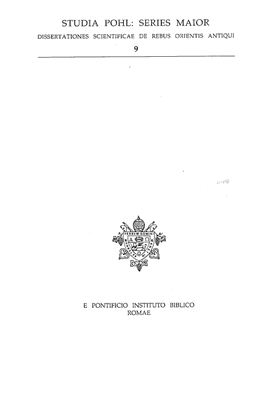Caplice R. Introduction to Akkadian. - Roma: Editrice Pontificio
Istituto Biblico, 2002. - 108 p.
ISBN-10 8876535667
ISBN-13 9788876535666
In his interesting and informative Introduction, Caplice explains that Akkadian is one of the great languages of world history that for about 2500 years was the vehicle of one of the dominant cultures of the Ancient Near East. Abundant religious, historical, literary and grammatical records written in this language have been found, both in its heartland and in areas such as Egypt, Syria-Palestine, Anatolia and Persia. The central area of its use was ancient Mesopotamia, which in the third millenium B.C. comprised the city-states of Sumer and Akkad.
The earliest written records from this area are in Sumerian, an agglutinating language with no relationship to any other known language and which became part of the cultural heritage of Akkadian speakers. The Akkadian language, which is a Semitic language, is itself first attested in proper names found in Sumerian texts ca. 2800 B.C. , but from 2500 B.C. we find texts fully written in Akkadian. In the last centuries of the pre-Christian era, Akkadian was increasingly replaced by Aramaic as a spoken language, and it survived only as a traditional scholarly language.
The present manual has been designed to offer a twelve-lesson or one-semester course in the essentials of Akkadian grammar. Each of the twelve lessons, besides concise explanations of the grammar, contains exercises in reading, transliteration and translation which introduce the student to common vocabulary and basic cuneiform signs. The book is rounded out with two Appendixes (I: General Phonetics of Akkadian; II: Numbers, Dating, Measures); an Index of Akkadian Vocabulary; an English-Akkadian Glossary; an Index of Signs; an Index of Sign-Values; and a Paradigm of the Strong Verb.
The book is beautifully printed on large pages (9.5 by 6.7 inches), stitched to open flat, and bound in a sturdy blue wrapper. In contrast to David Marcus's 'A Manual of Akkadian, ' the cuneiform signs in Caplice have been printed large enough to enable the student to easily make out the structure of even complex signs. The Caplice, however, has not been designed as a self-study manual (answers to the exercises have not been included), and those who are not either linguists or working with an instructor will probably find it far less approachable than the Marcus, despite the inferior physical format of the latter.
ISBN-10 8876535667
ISBN-13 9788876535666
In his interesting and informative Introduction, Caplice explains that Akkadian is one of the great languages of world history that for about 2500 years was the vehicle of one of the dominant cultures of the Ancient Near East. Abundant religious, historical, literary and grammatical records written in this language have been found, both in its heartland and in areas such as Egypt, Syria-Palestine, Anatolia and Persia. The central area of its use was ancient Mesopotamia, which in the third millenium B.C. comprised the city-states of Sumer and Akkad.
The earliest written records from this area are in Sumerian, an agglutinating language with no relationship to any other known language and which became part of the cultural heritage of Akkadian speakers. The Akkadian language, which is a Semitic language, is itself first attested in proper names found in Sumerian texts ca. 2800 B.C. , but from 2500 B.C. we find texts fully written in Akkadian. In the last centuries of the pre-Christian era, Akkadian was increasingly replaced by Aramaic as a spoken language, and it survived only as a traditional scholarly language.
The present manual has been designed to offer a twelve-lesson or one-semester course in the essentials of Akkadian grammar. Each of the twelve lessons, besides concise explanations of the grammar, contains exercises in reading, transliteration and translation which introduce the student to common vocabulary and basic cuneiform signs. The book is rounded out with two Appendixes (I: General Phonetics of Akkadian; II: Numbers, Dating, Measures); an Index of Akkadian Vocabulary; an English-Akkadian Glossary; an Index of Signs; an Index of Sign-Values; and a Paradigm of the Strong Verb.
The book is beautifully printed on large pages (9.5 by 6.7 inches), stitched to open flat, and bound in a sturdy blue wrapper. In contrast to David Marcus's 'A Manual of Akkadian, ' the cuneiform signs in Caplice have been printed large enough to enable the student to easily make out the structure of even complex signs. The Caplice, however, has not been designed as a self-study manual (answers to the exercises have not been included), and those who are not either linguists or working with an instructor will probably find it far less approachable than the Marcus, despite the inferior physical format of the latter.

